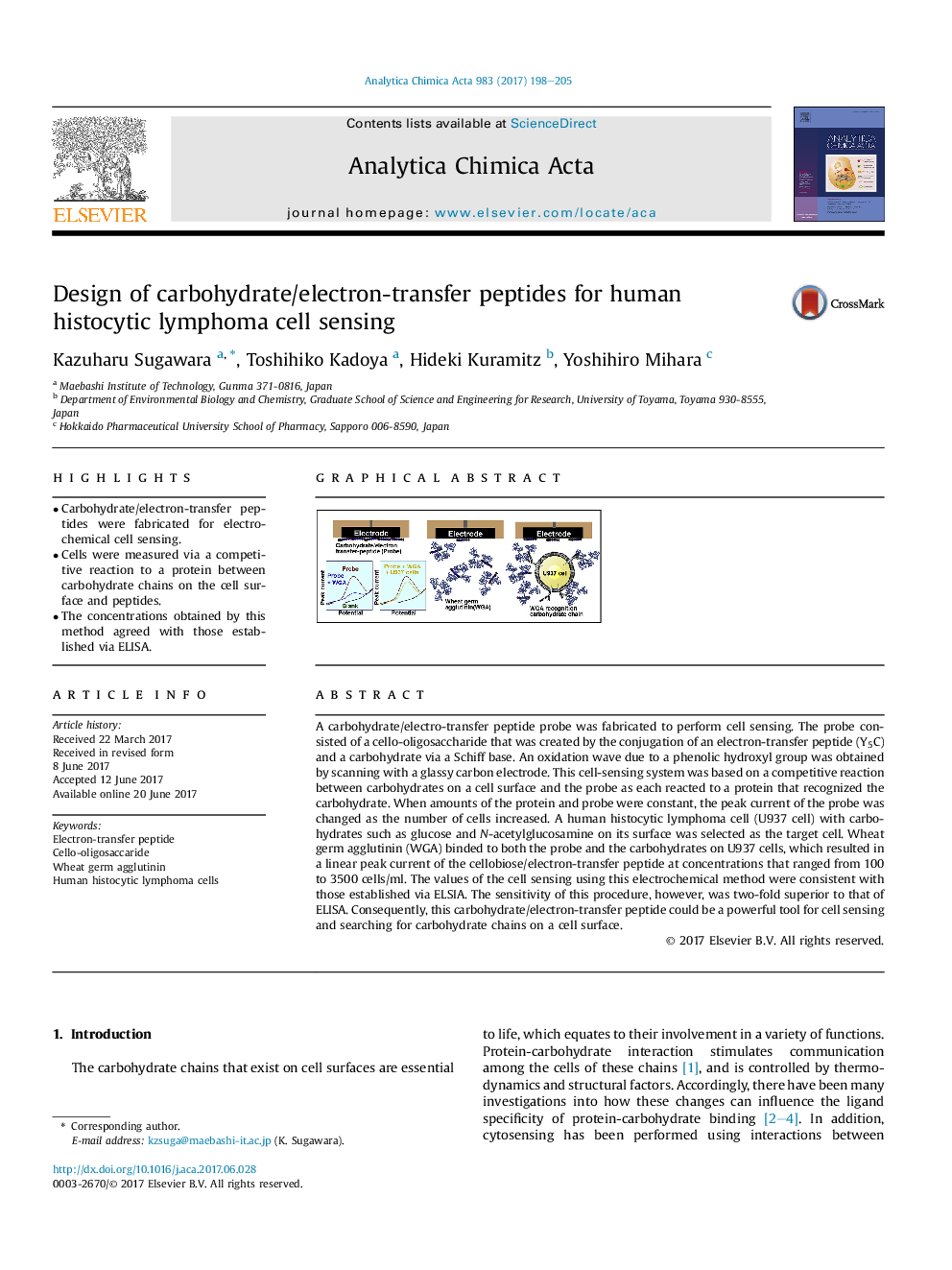| Article ID | Journal | Published Year | Pages | File Type |
|---|---|---|---|---|
| 5130662 | Analytica Chimica Acta | 2017 | 8 Pages |
â¢Carbohydrate/electron-transfer peptides were fabricated for electrochemical cell sensing.â¢Cells were measured via a competitive reaction to a protein between carbohydrate chains on the cell surface and peptides.â¢The concentrations obtained by this method agreed with those established via ELISA.
A carbohydrate/electro-transfer peptide probe was fabricated to perform cell sensing. The probe consisted of a cello-oligosaccharide that was created by the conjugation of an electron-transfer peptide (Y5C) and a carbohydrate via a Schiff base. An oxidation wave due to a phenolic hydroxyl group was obtained by scanning with a glassy carbon electrode. This cell-sensing system was based on a competitive reaction between carbohydrates on a cell surface and the probe as each reacted to a protein that recognized the carbohydrate. When amounts of the protein and probe were constant, the peak current of the probe was changed as the number of cells increased. A human histocytic lymphoma cell (U937Â cell) with carbohydrates such as glucose and N-acetylglucosamine on its surface was selected as the target cell. Wheat germ agglutinin (WGA) binded to both the probe and the carbohydrates on U937Â cells, which resulted in a linear peak current of the cellobiose/electron-transfer peptide at concentrations that ranged from 100 to 3500Â cells/ml. The values of the cell sensing using this electrochemical method were consistent with those established via ELSIA. The sensitivity of this procedure, however, was two-fold superior to that of ELISA. Consequently, this carbohydrate/electron-transfer peptide could be a powerful tool for cell sensing and searching for carbohydrate chains on a cell surface.
Graphical abstractDownload high-res image (418KB)Download full-size image
